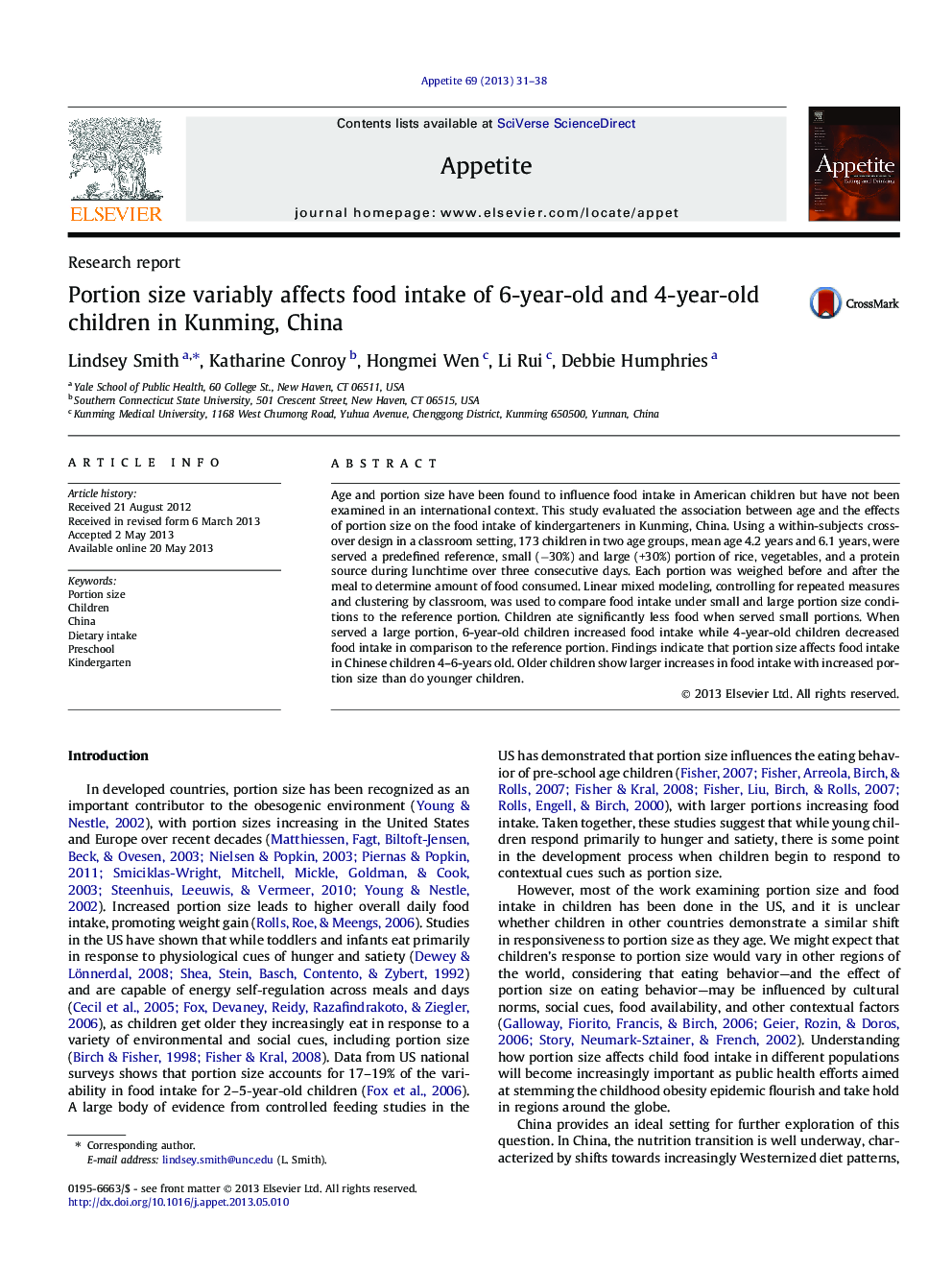| Article ID | Journal | Published Year | Pages | File Type |
|---|---|---|---|---|
| 939677 | Appetite | 2013 | 8 Pages |
•First portion size study conducted in a field-based setting in China.•All children consumed less food when served smaller portions.•6-year-old children consumed more food when served a larger portion.•4-year-old children consumed less food when served a larger portion.•Portion size-related energy intake increases may promote excess weight in children.
Age and portion size have been found to influence food intake in American children but have not been examined in an international context. This study evaluated the association between age and the effects of portion size on the food intake of kindergarteners in Kunming, China. Using a within-subjects crossover design in a classroom setting, 173 children in two age groups, mean age 4.2 years and 6.1 years, were served a predefined reference, small (−30%) and large (+30%) portion of rice, vegetables, and a protein source during lunchtime over three consecutive days. Each portion was weighed before and after the meal to determine amount of food consumed. Linear mixed modeling, controlling for repeated measures and clustering by classroom, was used to compare food intake under small and large portion size conditions to the reference portion. Children ate significantly less food when served small portions. When served a large portion, 6-year-old children increased food intake while 4-year-old children decreased food intake in comparison to the reference portion. Findings indicate that portion size affects food intake in Chinese children 4–6-years old. Older children show larger increases in food intake with increased portion size than do younger children.
